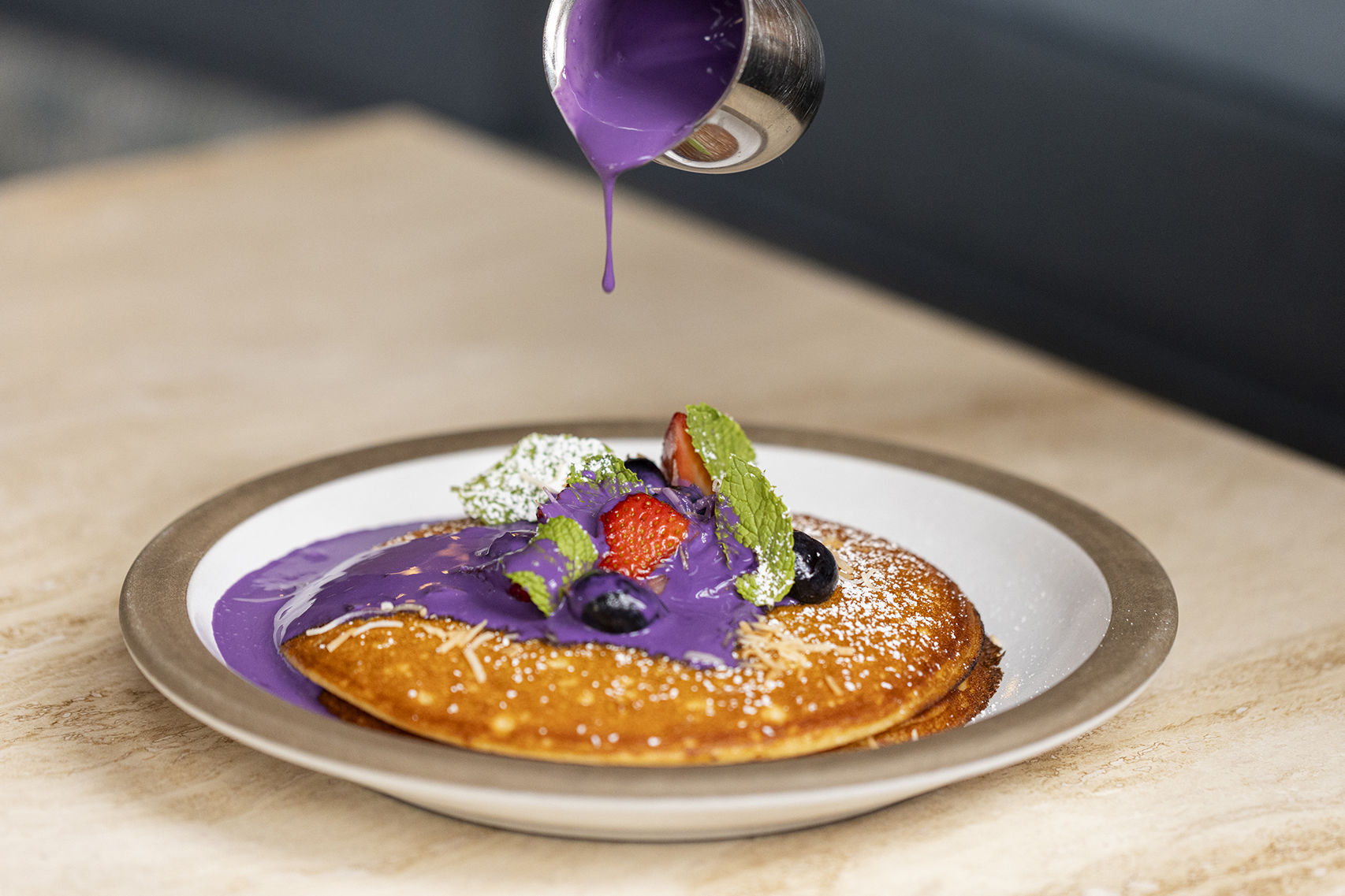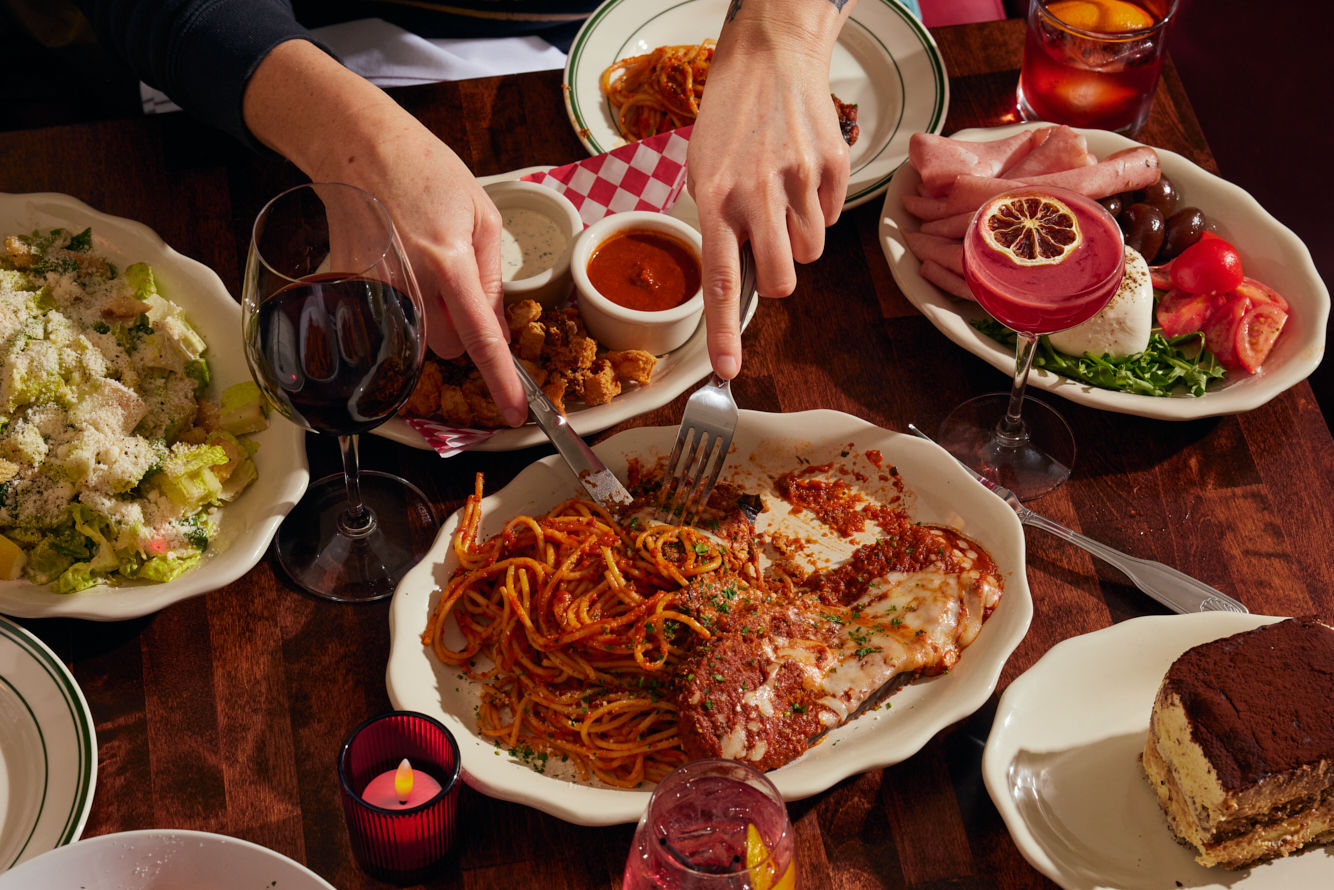Best Restaurants 2008
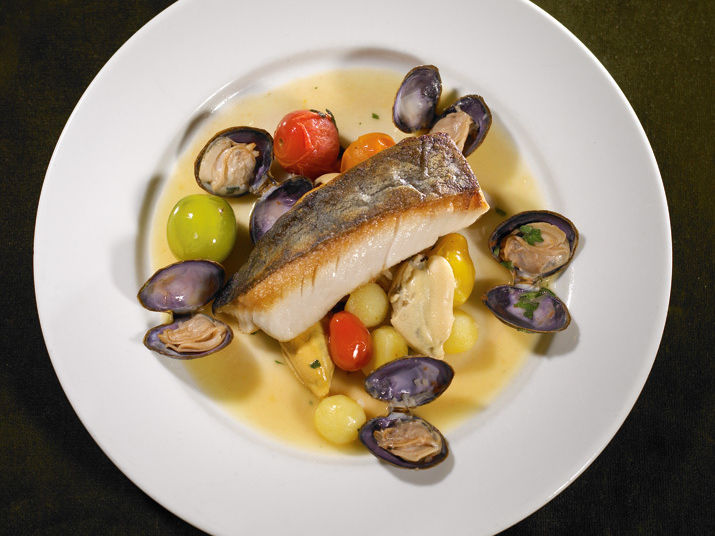
Image: Nathan Kirkman
WE ALL HAVE DINING PREFERENCES AND QUIRKS For instance, I believe beef should be cooked medium rare or it shouldn’t be cooked at all. And I rarely eat eggplant because it hurts my tongue. Just as each diner has a distinct culinary personality, each restaurant exhibits its own identity. With so many elements in play, however,it can be difficult to choose the one restaurant that will really work for you (and your dining companions, and your myriad moods and cravings and desires). So this year, we’ve taken our 10 favorite restaurants and broken them down by the quintessential measures of any great place to eat: food, chef, service, and atmosphere. The result, we hope, is a kind of deconstructed guide to dining at Portland’s top eateries, one that will give you all the information you need to choose the right restaurant with the right people on the right night.
BEAST
THE FOOD Plenty of restaurants in town offer chef’s tasting menus or special multicourse feasts in addition to their à la carte menus, but at Beast no matter who you are, or who’s sitting next to you, you’ll feast on the same things. Thankfully, there’s rarely a reason to crave anything but whatever chef Naomi Pomeroy puts in front of you. For $52 apiece, you and your friends can have a six-course, prix fixe feast ($45 gets you five courses) that almost always begins with a demitasse of silky soup, be it a truffled cream of cauliflower and celery root purée or a fresh shell-bean-and-tomato number. After this palate tickler comes an impressive spread of charcuterie (see “Flavor Profile” below), followed by the main course. One week it might consist of a saddle of rabbit stuffed with figs and served with braised cabbage; another time you might dine on a lamb loin chop pan-seared to perfection and paired with tomato-and-plum chutney. And after that? A perfectly dressed salad spiked with accents like fresh figs or smoky pork belly. Pomeroy believes that it will help prime your stomach for what’s next: a plate of artisanal cheeses, followed by, say, a chocolate soufflé with lemon-verbena whipped cream. It may take two hours or more to eat this meal. So relax. Settle in. Enjoy.
THE CHEF Self-taught cook Naomi Pomeroy made a name for herself with her ex-husband, Michael Hebberoy, when, between 2001 and 2006, they rolled out Ripe, the restaurant empire that included Gotham Building Tavern, Family Supper, and Clarklewis. But their nationally lauded entourage imploded two years ago thanks to the couple’s financial mismanagement. Now that the dust has settled, Pomeroy has returned to the kitchen. Though she’s keeping things much smaller this time around, the flavors on her French-inspired prix fixe menu are far from simple. In fact, she shows tremendous aptitude for balancing delicate flavors with bold presentation. It’s an honor to watch Pomeroy sustain not only her obvious love of food but also her knack for gathering people to eat it.
THE ATMOSPHERE Quite possibly the tiniest restaurant you’ll ever visit, with just 24 seats at two communal tables, Beast feels, above all, personal. Not only were the golden curtains made by Pomeroy’s mother, but the black wall at the back is covered with Pomeroy’s culinary musings. From your seat, you’ll get to see just about everything the folks in the kitchen do, from plating to chopping to firing up the small oven. And sitting elbow to elbow with strangers means you can count on getting to know your neighbors well. Really well.
THE SERVICE Only one or two servers work the floor at any time, but just as the cooks in the kitchen seem almost Zen-like, so does the person filling your water glass. Since everyone’s eating the same thing, the waiters are there primarily to walk you through the ingredients on your plate, or to answer any questions. Other than that, they blend seamlessly into the background, no small thing considering the size of the restaurant.
CHEF OF THE YEAR Q & A: NAOMI POMEROY
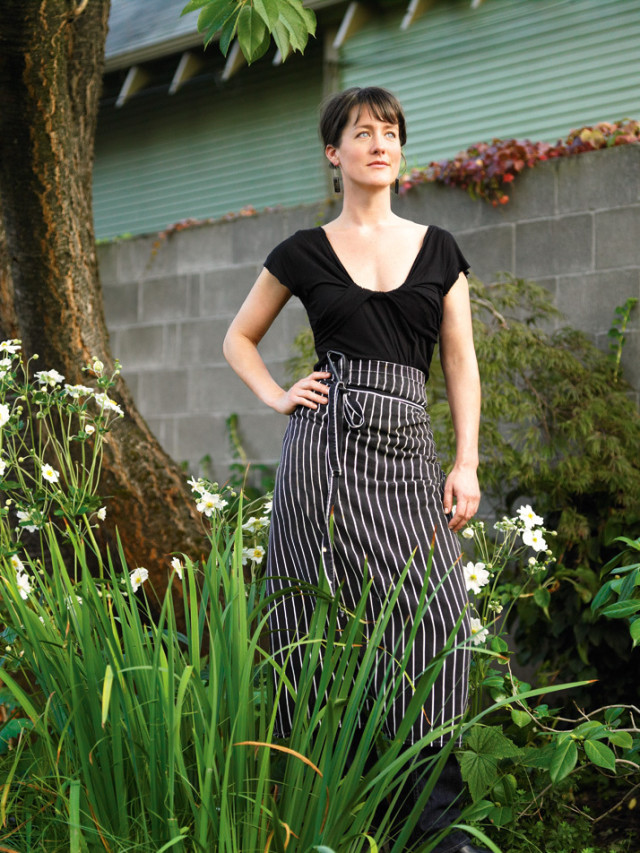
You just celebrated the one-year anniversary of Beast. What’s changed since you first opened?
Not much. It’s all been honed a lot. It’s way less harebrained and crazy.
Your insistence that everyone eat from the same six-course menu, with no substitutions, actually seems like a great way to reduce the craziness of being a chef.
That’s key. It’s wonderful to be a calm chef. It’s practically unheard of. We work long days. But anyone in the service industry will tell you that the constant “Can I have this instead?” or “Why don’t you have that on the menu?” takes away from the love you had for the product in the first place. To create something for myself has made me happy. It’s like being in a relationship. You can’t make someone else happy unless you’re happy. So I took that and applied the concept to my restaurant. If I didn’t totally love going to work every day, then I’d just quit.
And yet there are only two of you in the kitchen at any time.
Mika Paredes [her sous-chef] is my sidekick and best friend, something that comes along with spending 15 hours a day together. We also added another person—Emily Cafazzo—in the kitchen, who used to work at Gotham Building Tavern. She’s really talented and young and spritely.
How is it, trying to balance being a single mom and running your own restaurant?
It’s wild. But it’s like, you close your eyes and just jump and you know the universe is going to catch you. It just keeps working out for me. Emily sometimes takes [my daughter] August after she’s done; Beast’s landlord, who lives upstairs, takes care of her; or Micah Camden [co-owner of Beast, and of neighboring restaurants Yakuza and DOC], my ex-boyfriend, picks August up from school. And she often spends time in the restaurant with me. I’m lucky to have a daughter everyone wants to spend time with.
Sounds like a really modern family.
It is. It’s that whole “It takes a village” thing, even though that sounds clichéd.
You’ve run some controversial ads for your restaurant that portray you hugging a dead pig to your chest. How have people responded?
Some people write or call and say it’s beautiful. Others have called us murderous jerks. I had one person write saying he was the biggest pork fan but the picture was disgusting. I understand how, when you are a vegetarian, it can be hard to be bombarded with images like that. I was a vegetarian for seven years, so I know. But, at the same time, it’s like, Hey, people, meet your food. Every animal product you eat was once alive. If you’re uncomfortable with that, I respect that, but you shouldn’t be eating it.
Aside from the pig controversy, how are things going for you two years after you and your ex-husband’s Ripe Restaurant empire imploded and all your restaurants either closed or were bought out?
It’s something that still has airtime in my head. And it’s in the form of a lesson.
What’s the lesson?
Don’t bite off more than you can chew if you don’t want to choke on your food.
CARLYLE
THE FOOD It’s difficult to pinpoint where Carlyle’s loyalties lie when it comes to cuisine. At the core, however, most of its dishes are inspired by French technique, Italian rusticity, and American innovation—a combination that’s become quite common in Portland restaurants but is rarely executed with as much precision as it is at Carlyle.
Here, each combination contains one or two delightfully surprising elements, ones that chef Jake Martin doesn’t choose for the sake of gimmickry, but rather to elevate the main ingredient. A roasted fillet of Alaskan halibut set atop a tender summer-bean ragout might sound boring, but when paired with the saltiness and the smokiness of shredded, braised ham hock and the sweet earthiness of a sweet basil jus, it’s elevated to a kind of delicate and refined surf-and-turf. A single square of velvety ravioli filled with liquefied summer corn and drizzled with a tart saba (a sweet and thick wine vinegar that hails from Italy) provides just the right amount of piquancy needed to cut through the richness of seared Sonoma foie gras.
But when it comes to classic dishes like risotto, Martin doesn’t mess with what he knows has worked for centuries: Made with Carnaroli rice, which contains more starch than other risotto rice varieties, Martin’s rendition is flavored with large chunks of sweet lobster and a concentrated lobster broth; a decadent goat-cheese butter is folded in at the end. It’s simple, as risotto always should be, but the flavors are undeniably extravagant.
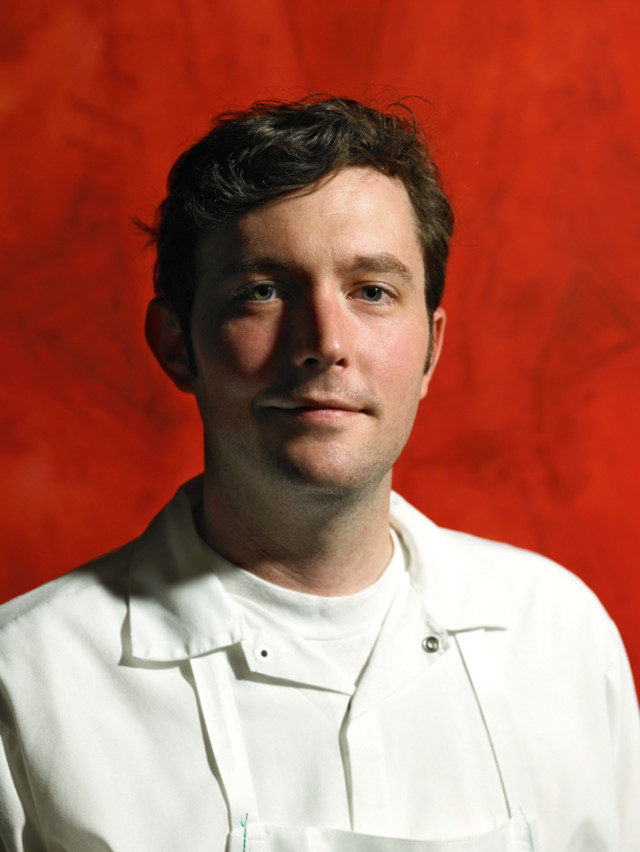
THE CHEF When it comes to the brains behind Carlyle’s kitchen, the restaurant has gone through a bit of an identity crisis since owner Bruce Goldberg opened it in 2003. Indeed, three head chefs have passed through its doors, and while each continued to elevate Carlyle’s menu, what ended up on the table often suffered from a lack of soulful execution and consistency. That is, until September, when chef Jake Martin took over, fresh from his post as chef de cuisine at Seattle’s lauded Veil restaurant. Before that, he teamed with Ethan Stowell at Union and with Maria Hines at Tilth—both Seattle restaurants that, were they located here in Portland, would certainly appear in our list of favorites. At Carlyle, Martin matches the modern, sparse atmosphere of the dining room with his delicately plated works of minimalist culinary art. But when it comes to the flavors on the plate, Martin achieves flavors and textures that are not only sensual but downright elegant in their restraint.
THE ATMOSPHERE Walk in around 5 o’clock and there’ll likely be a dozen folks sitting at the classy bar—all of them staring right at you. Don’t take it personally. Carlyle happens to be located in the oddly quiet no-man’s land that lies just underneath i-405, northwest of the Pearl District, and its regular patrons are often curious as to how you might have stumbled onto the place. While the bar exudes an upscale happy-hour charm, the dining room is slightly stiffer. That’s not a bad thing. But compared to all the exposed wooden beams and rough-hewn Douglas fir tables gracing just about every other restaurant in town, Carlyle’s rectilinear dining room, with its polished marble floors, may feel to some diners quite modern in its formality. As far as we’re concerned, Portland could use a little more of that kind of refinement.
THE SERVICE Carlyle is one of the few restaurants in Portland with true professional servers, as opposed to employees who consider waiting tables merely a way to fund their rock-band fantasies. In the details: black pants, button-up shirts, and crisp aprons. In their demeanor: cordial and helpful, but not overwhelmingly so. They are articulate about the caramelized summer squash tortellini you’re about to order without waxing overly poetic.
CLYDE COMMON
THE FOOD At the top of Clyde Common’s menu, in a typeface that emulates an old, stodgy typewriter font, are the words “Domestic & Foreign Cooking.” Do not be turned off by such modesty. Instead, be charmed by it, and have faith that anything on the menu that you aren’t familiar with—like piquillo peppers—or that you’re not sure you’re ready to try—such as a ravioli of veal sweetbreads—will be rendered with just the right amount of authenticity. In fact, if you’re a straightforward, no-nonsense sort of diner, you’ll appreciate the lack of trickery once any of Clyde Common’s rustic dishes arrives at your table. If the menu says “seared chicken thighs, shaved beets, cilantro, yogurt, pistachios,” that’s exactly what you’re getting, in a quintessential meat-and-potatoes sort of way. But the dish won’t be slapped together; no restaurant in town knows better how to complement that most underutilized cut of poultry.
As for all those so-called “nasty bits” on the menu—the liver and tongue and sweetbreads and beef heart—this is the best place to explore them. Start with the chicken-fried chicken livers. Trust us. We’ve seen dozens of conservative diners who claim they’ll never eat liver cross over to the sweet, sweet dark side.
THE CHEF Having arrived from Jackson Hole, Wyoming, in 2004, the bespectacled and tattooed Jason Barwikowski honed his skills in some of Portland’s most lauded kitchens before alighting in the open kitchen at Clyde Common in 2007. First he cooked at Paley’s Place, then at the now-defunct Gotham Building Tavern, followed by a stint with the meat-obsessed Simpatica boys. Barwikowski has devised a menu that feels somewhat English and, at times, somewhat Italian. It is both rugged and rustic—rabbit, grilled livers, roasted carrots, and English peas, for instance, served with an onion-and-filbert salad—but he never sacrifices the elemental nature of each dish.

THE SPACE With long communal tables downstairs filled with fresh-faced locals and out-of-towners staying in the trendy Ace Hotel next door, and smaller, private tables upstairs, Clyde Common exudes the feel of both a casual gastropub and a private inn-at-the-end-of-the-road. It’s the friendly, bustling bar—whose tenders mix their gin with house-made tonic and geek out on bitters and absinthe—that unites the soaring, sunlit, two-story dining room and open kitchen. A young, fashionable, easy-on-the-eyes clientele fills the bar with banter—often late into the night, well after the kitchen has closed and the chairs have been turned upside down on the tables.
THE SERVICE The waitstaff may seem to give off a certain my-cup-of-espresso-is-better-than-yours hipster attitude at first, but once at your table and taking your order every one of them is gracious. Don’t expect your waiter to fold your napkin while you’re in the loo—Clyde just isn’t that kind of place—but you can expect efficient, unfrenzied service from people who love food and love to talk about it.
Pok Pok
THE FOOD Pad Thai is for suckers. Or at least that’s what just about anyone who eats at Andy Ricker’s temple of Southeast Asian cuisine for the first time will probably realize. Especially after they’ve just dug into a meal of spicy northeastern Thai minced-duck-breast salad with duck liver, cracklings, lime juice, fish sauce, mint, and lime leaf, followed by caramelized Vietnamese fish-sauce wings or a creamy Malaysian coconut-milk curry specked with delicate prawns, fish cakes, shredded chicken, and light, golden puffs of tofu. Pok Pok’s brilliant renditions of Southeast Asian street food lodge themselves in the recesses of your brain, such that you cannot go more than a day without returning for more. We’ve started referring to the Pok Pok initiation as “getting your umami on.”
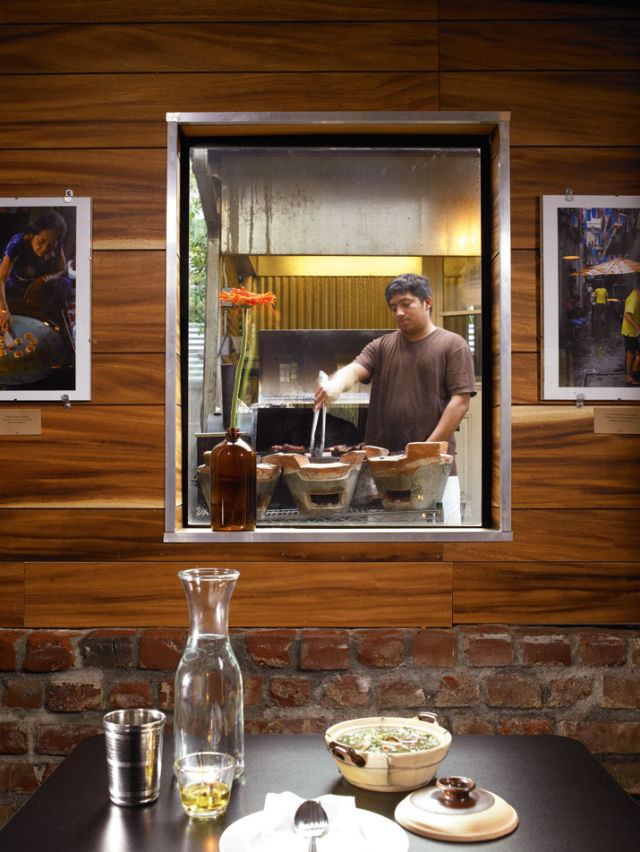
Image: Nathan Kirkman
THE CHEF In 2005, after more than 20 years spent exploring the back roads and street markets of Thailand, Vietnam, and Cambodia, chef Andy Ricker—a semiretired rock musician and former housepainter—set up a take-out shack in the driveway of his house on SE Division Street. Since then, he has opened a full-service restaurant in the basement and first floor, and he plans to open another Asian-inspired restaurant, Ping, in Chinatown next year.
THE ATMOSPHERE Sit beneath a heat lamp at one of the covered outdoor picnic tables and you’ll feel as though you just stumbled upon a night market in Chiang Mai. Or sit inside the wood-paneled, clandestine drinking den and choose from a menu of shared plates meant to be paired with whiskey and beer. All manner of Pok Pok diehards are willing to wait to get a seat, so don’t think that arriving early will save you. You’ll have to tap your feet with the rest of the diners at a nearby bar or out on the sidewalk.
THE SERVICE Ask a server about a dish at Pok Pok and they’ll likely be able to tell you where in Thailand Ricker learned the recipe, or whether the sawtooth root in the herbal salad is bitter. And once the food is brought to the table, they’ll be sure to check up on you, wholly excited to see you’re smiling while chowing down on those chicken wings.
LE PIGEON
THE FOOD Gabriel Rucker, the young culinary maestro behind Le Pigeon’s near-immediate success in Portland, has never failed to play with his food. In fact, every item on the French-influenced menu represents an exercise in innovation and tongue-in-cheek humor. What you may visualize when ordering the “tomato tart, green beans and duck feet” will likely have little to do with what’s actually set in front of you. Instead, you’ll bite into flaky puff pastry that envelops a tangy and savory tomato- and-duck jam spiked with vinegar and Tabasco. On top, a duck egg yolk and two deep-fried duck feet covered in crispy, addictive, sweet-and-sour duck skin may look intimidating, but nibbling on them constitutes one of the most pleasurable eating experiences one could have. Other dishes, like foie gras PB&J, may sound like a trick but are in fact straightforward: white bread, peanut butter, jelly, foie gras. Same for the foie gras profiteroles on the dessert menu: a trio of tiny éclairs stuffed with foie gras ice cream and topped with both foie gras caramel sauce and foie gras powdered sugar. It may sound zanier-than-thou, but Rucker manages to keep the flavors true. How those flavors interact is entirely up to his culinary imagination, and more often than not, they will stimulate your own.
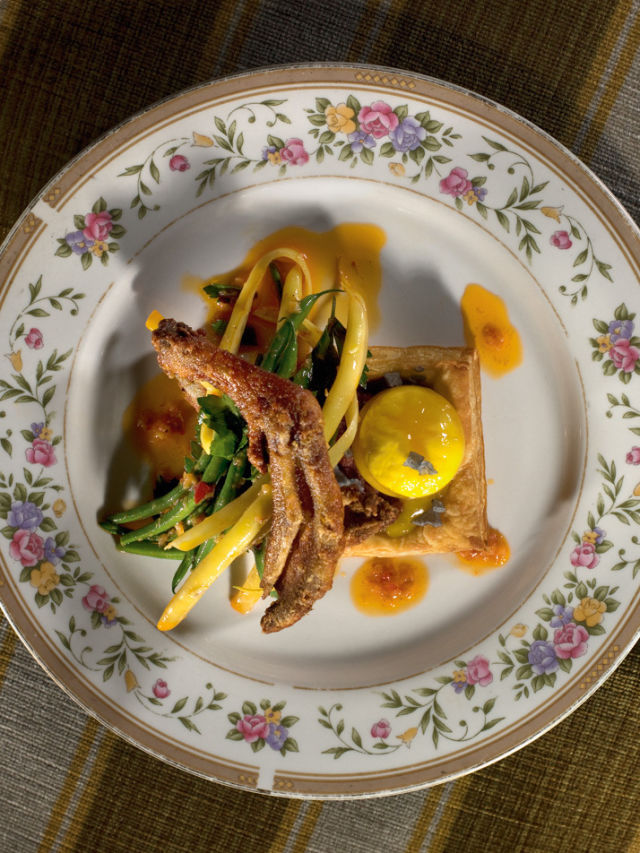
Image: Nathan Kirkman
THE CHEF Rucker, only 27, has had it quite good since he opened Le Pigeon in 2006. Food & Wine came calling. Gourmet and People did, too. The New York Times and the James Beard Foundation have also wanted a piece of him. And you can tell. Where once Rucker stood behind his open chef’s counter eagerly watching each diner’s face to see the response to his creative cuisine, now he knows he’s got every person in the dining room lapping it up, waiting to see what he’ll do next. As a result, he cooks with a cocky, though nevertheless charming, swagger—but he still greets every person who walks through the door with a boyish, appreciative smile. And his innovative cuisine continues to shine as it did the first week Le Pigeon opened.
THE ATMOSPHERE Filling just three communal tables, Le Pigeon’s clientele ranges from Lake Oswego soccer moms to E Burnside Street punks, but their undying love for Rucker’s food brings them all together. Brick walls and shelves of preserved goods lend the space the feel of a French bistro, but the boisterous, come-as-you-are tone is pure Portland.
THE SERVICE Given the cramped space, the servers—of which there are usually two, maybe three at most—manage to move gracefully between tables and the chef’s counter. Their demeanor is casual but by no means inattentive. They’re eager to please, apologizing profusely if you arrive and the wait is two or more hours (entirely a possibility), even trying to give you a few inside tips on how to go about securing a seat next time you visit (trust us, the only way to get a seat is to call way in advance). Seated at one of eight stools at the chef’s counter, you’ll get to watch all the fiery action, but the view from any table shows off a kitchen staff exhilarated by what they’re cooking. No matter where you sit, don’t be surprised if the chef brings your plate to you himself, with a wink.
CASTAGNA
THE FOOD At this sophisticated Southeast establishment, diners settle in to a truly Mediterranean menu—one with influences that straddle the borders of France, Spain, Italy, and Greece. At its heart are dishes like Milanese caprese, a breaded and fried cutlet of grass-fed veal topped with a salad of buffalo mozzarella, heirloom tomatoes, and basil. But Castagna’s fare travels even further, touching on a more refined Italy with its pillows of agnolotti pasta stuffed with shell beans and mascarpone, or moving over to Greece with grilled, tender, baby octopus accompanied by cured black olives, roasted potatoes, and salicornia, an edible seaweed with a sweet and salty bite. There are Northwest accents, too, as with the sautéed coho salmon slathered in a light crawfish cream and sprinkled with chanterelles and corn. Each dish is an exercise in subtlety, plated elegantly on white china. It’s calming, this cuisine, and undeniably pure in its authenticity and intention.
THE CHEF Since chef and owner Kevin Gibson decided to go on hiatus from the kitchen last winter, his longtime protégé, Elias Cairo, has taken over almost seamlessly, maintaining a menu that highlights fresh seafood like Dungeness crab, sea scallops, black cod, and salmon. Virtually self-taught, Cairo seems to focus his passions in the realm of charcuterie: He makes his own Tuscan salami, soppressata, pork rillons, and pâté Breton for the plate each week—a plate that is one of the best meat boards in town.

Image: Nathan Kirkman
THE ATMOSPHERE Minimalistic without being cold, Castagna offers fine dining for the mature, artsy set. A lone 5-foot-by-5-foot oil painting of a blooming artichoke graces one wall. A metal-sculpted, fruited olive branch arches over a trio of tables on another. Candlelight and plush brown leather chairs soften the spaciousness of a dining room framed by soaring rafters. Open for nine years, Castagna feels like a classic, and as a result it’s consistently drawn a more mature dining set—one that includes well-dressed professorial types and seasoned social butterflies who appear to have come of age in a much earlier era. But it also draws a good number of young, gourmet-obsessed couples looking for a place to get away from their appletini-swilling peers.
THE SERVICE Our 2007 Waiter of the Year, Sam Grayson, still holds court over the dining room with grace and practiced fortitude, a towel draped over his arm, nary a stain on his ironed apron, hands folded gentlemanlike at his chest as he takes your order. Following in perfect suit, Castagna’s small cadre of professional, articulate waiters and bussers attends to patrons with thoughtful attention to detail, so much so that we were tempted to name Castagna’s entire waitstaff as Waiters of the Year this time around. For now, we’ll let a few other restaurants have their turn in the sun.
SCREEN DOOR
THE FOOD A cursory look at Screen Door’s menu reveals a straightforward list of Southern classics: Pimiento cheese. Low Country shrimp and grits. Carolina pulled pork. Fried catfish. Collard greens. Black-eyed peas. Chicken and waffles. These are dishes just about any of us can wrap our heads (and our mouths) around. But what makes this bastion of Southern cuisine rise above the rest is its ability to execute such fare with Pacific Northwest-style, using fresh, seasonal ingredients. Hence, Screen Door’s weekly local/organics sides menu (see “Flavor Profile” below), which showcases whatever’s freshest in dishes like late-summer corn pudding studded with jalapeños and chives, or an arugula-and-Maryhill-peach salad graced by shaved fennel and red onions and drizzled with a cane-sugar vinaigrette. But it’s not just the sides menu that exemplifies Screen Door’s Northwest ethos; it’s the Cascade Natural beef brisket and the Draper Valley chickens frying on the stove that prove this restaurant’s dedication to truly regional cuisine—even if the fried chicken recipe traveled here all the way from the South.
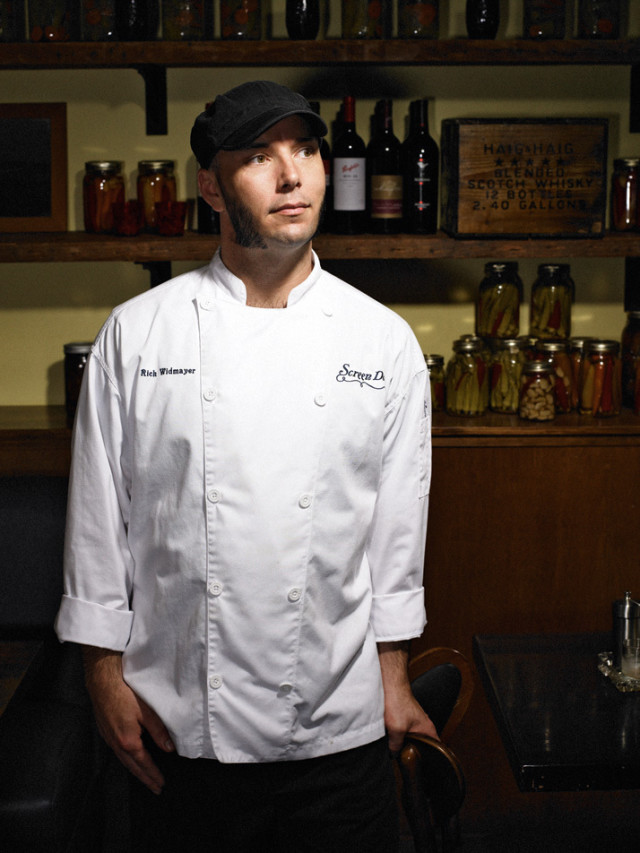
THE CHEF Though run by chef Rick Widmayer, who formerly worked at Clarklewis and Mother’s, Screen Door’s kitchen is a largely collaborative one. In fact, most of the homegrown Southern recipes came from Nicole Mouton, who owns the place with her husband, David. Having honed her knowledge of po’ boys and pulled pork while growing up in Louisiana and, later, while working the restaurant scene in New Orleans, Mouton primed Widmayer on all things Southern. But it’s Widmayer who executed the Northwest-inspired local/organics sides menu. Culling knowledge from four years spent overseeing brunch at Mother’s, Widmayer also introduced Screen Door’s ridiculously popular brunch—the chicken and waffles alone are reason to dine there on weekend mornings.
THE ATMOSPHERE Modern porch décor with a dinerlike backdrop. Jars of pickled peppers, green beans, and tomatoes line the walls. Blue-vinyl booths beckon from the back, while wooden, mom-and-pop tables and chairs fill the rest of the airy space. A small bar serves spot-on sazeracs and hurricanes, while the sound of sizzling food trickles from the open kitchen. Long lines, boisterous guests, and a certain chaotic, Southern-inspired energy makes this restaurant a bright light amid the more formal and quiet restaurants on nearby NE and SE 28th Avenues.
THE SERVICE Fast, efficient, no-nonsense servers dressed every which way may appear somewhat frenzied, but they’ll always bring your fried chicken out mere seconds after it emerged from the fryer, and if they know you’re an obsessive fan of pimiento cheese, they just might make sure the chefs fill that ramekin to the brim. A couple of servers have even exhibited a sort of Flannery O’Connor-esque Southern gothic demeanor, and a few will use a sweet-as-pie lilt when they take your order.
TORO BRAVO
THE FOOD It can be a bit daunting to order food at Toro Bravo, Portland’s best tapas restaurant: After all, there are more than 50 plates to choose from. Luckily, it’s incredibly difficult to go wrong with just about anything on the menu. Nonetheless, the trick to ordering tapas is achieving balance—not too much meat, not too many vegetables. Here’s how we like to do it up: Start with a strong cocktail to prime your stomach for a long, pleasurable feast. Order the bacon-wrapped dates stuffed with almonds and drizzled with warm honey. Then move on to a spritzy glass of Spanish white wine like txakoli, paired with a salad: perhaps a simple baby-cucumber salad spiked with mint, almonds, and slivered red onions, or perhaps a bowl of fresh, spicy greens from Singing Pig Farm that’ve been tossed with heirloom tomatoes, mint, red onion, and creamy blue cheese. Then it’s time to get serious with a pitcher of sangria and a plate of deep-fried oxtail-and-potato croquettes or a pyramid of salt-cod fritters. Next up, succulent and buttery griddled shrimp brushed with chile sauce will offset the last heavy plates just enough so you’re ready for a sizzling platter of squid-ink fideo (paella made with thin noodles) mixed with house-made rabbit sausage, corn, and heirloom tomatoes. If you’re a pro, you’ll leave room for lamb braised with apricots and coriander or a house-smoked coppa steak. Otherwise, simply move on to dessert: Spanish coffee and a bowl of chocolate-covered almonds. Come back in a day or two for an entirely different, but equally satisfying, feast.
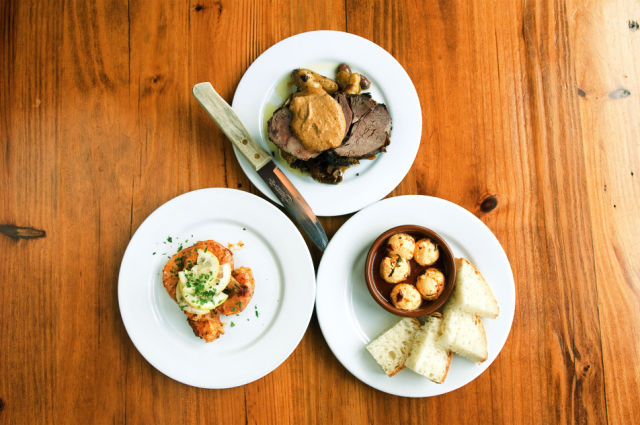
Image: Kim Nguyen
THE CHEF Having co-founded Nob Hill’s Viande Meats & Sausage with longtime friend Benjamin Dyer in 2002, John Gorham knows steaks and burgers and lamb shoulders well, which makes Toro Bravo a fantasyland for carnivores. But it’s not just Gorham’s knack for expertly throwing together a batch of North African sausages or pork rillettes that has Portland diners practically begging for more—it’s his ability to juggle so many different ingredients and menu items, a skill that can be attributed to the five years he spent as co-owner and chef of Simpatica Catering. Plus, there’s something about his solid presence behind the kitchen counter at the back of the dining room that gives us full confidence in his abilities. Or maybe it’s the occasional flash of the flame tattooed on his right forearm that serves to confirm there’s no other man we’d rather have cooking our smoked pork shoulder or braised lamb shanks.
THE ATMOSPHERE Loud, bustling, and occasionally rowdy, like any superb tapas joint should be, Toro Bravo has gained a fierce following, so the wait for a seat often lasts an hour or more. Fortunately, there are a few standing-room-only counters toward the front, a small bar, and, nearby, a charming upstairs drinking establishment called the Secret Society, where hungry customers can wait. Once seated at a communal table, the chef’s counter, or a two- or four-seater, you may have to strain to hear your dining companions, but most people are so engrossed in their food, mere grunts and yelps of satisfaction seem a fine substitute for civilized conversation.
THE SERVICE With so many plates being fired in the kitchen and going out to guests, the waitstaff is impressively quick, and at times brisk, but never in an offensive way. In fact, our pick for 2008 Waiter of the Year lords over the dining room at Toro Bravo. Why did we pick her? Because we’ve never seen anyone undertake so many tasks at once without seeming frazzled. You might not be able to engage your waiter in a friendly conversation about the merits of locally grown cucumbers, but she’ll at least manage to get your order correct, even amid the din. And with five plates in each hand, she’ll still deliver your fried anchovies without breaking a sweat.
PALEY’S PLACE
THE FOOD The other night, at Paley’s Place, I happened to be seated at a table next to Kimberly Paley, the wife of chef Vitaly Paley. Apparently, she had taken a break from hosting to dine with some friends and their toddler son, who was celebrating his birthday. “You’re so lucky,” Kimberly said to the boy as he tried the pasta in front of him. “Do you know where that goat cheese comes from?” It was a poignant moment, one that epitomized the way in which Paley’s Place has schooled a generation of Portland chefs and diners in a genuinely local, sustainable, seasonal, organic ethos since opening in 1995. As I dined on a grilled peach salad with prosciutto and green and white long beans, I gazed at black-and-white photos of the Oregon lamb farmers, cheese makers, and pear growers the restaurant has partnered with over the years, and I could practically taste the care that went into the sun-kissed fruits and vegetables on my plate. Taking a bite of each, I imagined the moment when the farmer drops off a box of leeks or a whole lamb and lays it on the table in front of the chef, and the chef begins to imagine all the sumptuous meals he could make. In each dish, it’s that moment diners at Paley’s Place are tasting.
THE CHEF Among the pioneers of Portland cuisine, there may well be no chef more skilled than Vitaly Paley, whose composed French- and Pacific Northwest-inspired dishes are the picture of perfected technique and exacting creativity. Paley grew up in Russia and has worked in the kitchens of some of New York’s finest restaurants (Union Square Café, Chanterelle). Perhaps because of his background, he brings a sense of European finesse and urban sophistication to each of his dishes. These range from a classic escargot à la Bordelaise with roasted marrow bones and garlic-rubbed toast to melt-in-your-mouth ravioli filled with a sunny yellow egg yolk and goat cheese. It’s often said that just about every chef in Portland owes some part of his or her success to Paley, whether by working in his kitchen or enjoying a meal at his bar. If it stays that way for another decade, we won’t complain.
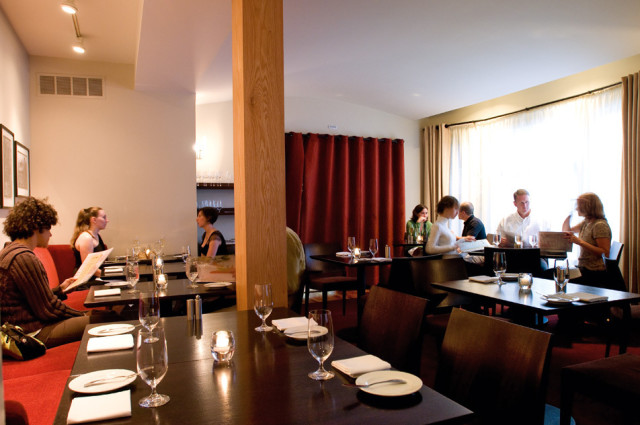
THE SPACE Set in a white Victorian house in Nob Hill with seating for about 50 diners, Paley’s Place can seem a bit formal when it’s empty, painted as it is with conservative white and tan tones. But once filled with the sounds of sated diners, it becomes a warm, welcoming gourmet den. Whether seated at the bar, at one of the rowdy tables near the front door, or in the main dining room, everyone at Paley’s Place seems to view a meal here as a special occasion, even if it’s no one’s birthday. There’s an excitement in the air, as though each customer sits at the feet of a culinary guru—one they’re sure will surprise them at every turn.
THE SERVICE Kimberly Paley, once a modern dancer in New York, glides between tables, past the bar, and into the kitchen with a confidence that is practically unparalleled in this town. Most of her waitstaff follows suit, peerlessly taking orders, walking diners through the cheese course, and delivering martinis with nary a blink nor a stumble. Just as Paley’s Place in many ways defined Portland’s restaurant scene 13 years ago, so has it influenced the city’s service industry—some of the best servers in Portland have worked these tables.
WAITER OF THE YEAR: COURTNEY WILSON-GORHAM

Image: Kim Nguyen
THE BEST SERVERS in town don’t always have to sport a starched, white, button-up shirt, drape a white towel over an arm, and speak in affected tones to prove their worth. In fact, there’s an art to waiting tables in restaurants that lie at the other end of the dining spectrum—coffee-and-a-slice-of-pie diners; hectic, kid-friendly pasta joints; even rowdy tapas restaurants. Hence our pick for this year’s Waiter of the Year: Courtney Wilson-Gorham. Wife of chef John Gorham (see p. 122), Wilson-Gorham heads up the dining room at Toro Bravo: Every night she’s taking drink or food orders for 60 or 70 diners, with each table ordering 5, 10, maybe even more dishes at a time from a menu of some 50 items. Of course, she’s got the help of a cadre of other servers, but it’s Wilson-Gorham who always seems to be doing most of the heavy lifting.
She pulls this off with a certain no-nonsense efficiency we’ve seldom witnessed at other restaurants in town. She’ll still stop to chat with you for a few seconds, sure, though she’s got a knack for conversing and accomplishing several tasks at the same time without you even noticing. Such multitasking should be part of the job, right? Except that we’ve encountered one too many servers in Portland who’ve managed to make us feel rushed or unimportant while they attempt to pour our water, write down food orders, set down our drinks, and ask how old our children are all in one breath.
As many seasoned servers in Portland did, Wilson-Gorham learned much of what she knows from Portland’s reigning queen of table service, Kimberly Paley of Paley’s Place, where Wilson-Gorham worked as floor manager for five years. Before that, Wilson-Gorham and her husband traveled together across the country, working in resorts and restaurants in Virginia and California, before settling in Eugene and then Portland. As a result of her travels, Wilson-Gorham exhibits a kind of humble, world-savvy, seasoned knowledge of her customers that keeps her centered, focused, and gracefully in charge of what has become one of the busiest restaurants in Portland.
Lovely Hula Hands
THE FOOD When eating out, most diners want food that they can’t or wouldn’t make at home—fancy fare prepared with flourish and verve that they’ve come to believe only a trained chef with a French accent can pull off. But occasionally a chef manages to remind us that the best cooking is often the most accessible. Such a chef may serve food modeled after the sort of meals our mothers and grandmothers might have prepared—with a vegetable and some meat, maybe a grain or a salad to round it out. He makes it with the utmost attention to detail, ensuring that the fingerling potatoes accompanying our braised lamb shoulder are perfectly seasoned with salt, pepper, and rosemary; that the grilled sweet-corn polenta is a soft and creamy foil to the richness of a poached farm egg and an earthy, sweet ratatouille. Sometimes his fare is as simple as a plate of olive-oil- fried and salted padrón peppers and cherry tomatoes, or chunks of watermelon and soft, Israeli feta touched by curls of refreshing mint and a few salty, cured black olives. This is the kind of food that makes us want to go home, turn on our ovens, and pull out our cookbooks—the kind of food that reminds us not only of the pleasures of the table, but also the pleasures of a few simple ingredients and a stove.

Image: Kim Nguyen
THE CHEF A graduate of Alice Waters’s acclaimed Berkeley restaurant Chez Panisse, the talented Troy MacLarty began building a name for himself in Portland in 2004 as a wunderkind chef at the now-defunct Family Supper. Once Family Supper shut its doors, MacLarty remained largely under the radar until Lovely Hula Hands snatched him up—a move that probably saved the restaurant from fading into Portland’s culinary background. As he did at his past posts, MacLarty keeps it casual here, plating his food as though he were throwing a dinner party at home. But his impressive dedication to handpicking the freshest ingredients he can find—even occasionally helping farmers grow them for the restaurant—and his ability to spin them into culinary gold elevate what may at first seem like fairly straightforward fare into the realm of the transcendent.
THE SPACE Shabby chic meets N Mississippi Avenue grunge, with a little romance thrown in. Set in a two-story brick building, Lovely Hula Hands possesses a certain Victorian charm in its flowery wallpaper, its candelabras and chandeliers. But the space is far from stodgy—indeed, it’s one of the most inviting dining rooms in town, drawing out-of-towners, culturally savvy retired folk, and the neighborhood’s young, beer-and-a-cigarette crowd (though when dining, members of the last group exhibit an uncanny intuition for choosing the perfect bottle of pinot noir). On a warm night, the patio at Lovely Hula Hands can’t be beat.
THE SERVICE As far as we can tell, the waitstaff here is an all-female entourage, and one that exudes (if we may say so, at the risk of perpetuating stereotypes) a certain maternal instinct toward its customers. If your white wine is too warm, they’ll apologize profusely and bring you the shiniest ice bucket they can find. If your steak isn’t prepared exactly how you like it (a rare event), they’ll whisk it back to the kitchen and make sure the chef gets it right. And while they’ll continually check up on you to make sure you’re satisfied, they know that when eating food as good as this, you’ll appreciate some space in which to enjoy it.

